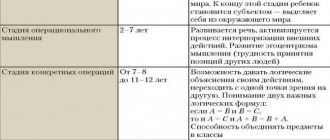Everything that a person considers valuable to himself is a reward. Motivation of employees should be carried out by the manager with knowledge of the needs of his subordinates. The purpose of the motivation function is to ensure that members of the organization perform work in accordance with the plan and in accordance with the responsibilities delegated to them. Consider the following motivation factors:
- wage
- working environment
- stability
- own development
- usefulness of work
- interest in work
All human needs have a certain hierarchy. The hierarchy of needs can be presented in different ways.
There are two main directions of motivation theory:
- Classic theories of motivation include those of A. Maslow, D. McClelland, F. Herzberg.
- Process theories of motivation that focus on the process of motivation. These include V. Vroom's theory, the theory of justice and the Porter-Lawler theory.
Brief description of classical theories of motivation
- A. Maslow's hierarchy of needs theory. Thus, the American scientist A. Maslow identified five needs: physiological, the need for safety and security, social, respect, and self-expression. At a certain moment, one need dominates, but human activity is stimulated not only by it.
- Theory of D. McClelland. Another model of motivation is the one that places the main emphasis on the needs of higher levels, was the theory of David McClelland. He suggested that people have three needs: power, success and belonging. The desire to influence others is expressed in the need for power. The need for success is satisfied by the process of bringing a job to a successful conclusion, rather than by proclaiming that person's success by confirming his status. The motivation for the need for involvement according to D. McClelland is similar to social motivation according to A. Maslow. Such people are interested in the company of acquaintances, establishing friendships, and helping others.
- The problems of motivation were also considered in his works by the American scientist F. Herzberg, who divided incentives into motivators and hygiene factors. He included wages, working conditions, psychological climate, and the degree of direct control over work as hygienic factors, and promotion, success, approval of work results, and recognition as motivators. Hygienic factors, according to F. Getsberg, are associated with the external environment, motivation - with the nature and essence of work. In the absence or insufficient degree of presence of hygiene factors, a person develops job dissatisfaction, thus, the presence of hygiene factors only prevents the development of job dissatisfaction. The manager must delve into the essence of the work himself and use “motivations” in order to effectively motivate his subordinates.
Personal motives
Personal motives are the need (or system of needs) of the individual for the function of motivation. Internal mental motivations for activity and behavior are determined by the actualization of certain needs of the individual. Activity motives can be very different:
- organic - aimed at satisfying the natural needs of the body and are associated with the growth, self-preservation and development of the body;
- functional - satisfied through various cultural forms of activity, for example playing sports;
- material - encourage a person to engage in activities aimed at creating household items, various things and tools;
- social - give rise to various types of activities aimed at taking a certain place in society, gaining recognition and respect;
- spiritual - they form the basis of those activities that are associated with human self-improvement.
Organic and functional motives together constitute the motivation for the behavior and activity of an individual in certain circumstances and can not only influence, but change each other.
Human needs manifest themselves in specific forms. People may perceive their needs differently. Depending on this, motives are divided into emotional ones - desires, desires, attractions, etc. and rational - aspirations, interests, ideals, beliefs.
There are two groups of interconnected motives of life, behavior and activity of an individual:
- generalized, the content of which expresses the subject of needs and, accordingly, the direction of the individual’s aspirations. The strength of this motive is determined by the significance for a person of the object of his needs;
- instrumental - motives for choosing ways, means, methods of achieving or realizing a goal, conditioned not only by the need state of the individual, but also by his preparedness, the availability of opportunities to successfully act to realize his goals in given conditions.
There are other approaches to classifying motives. For example, according to the degree of social significance, motives of a broad social plan (ideological, ethnic, professional, religious, etc.), group plan and individual-personal nature are distinguished. There are also motives for achieving goals, avoiding failures, motives for approval, and affiliative ones (cooperation, partnership, love).
Motives not only encourage a person to act, but also give his actions and actions a personal, subjective meaning. In practice, it is important to take into account that people, performing actions that are identical in form and objective results, are often guided by different, sometimes opposing motives, and attach different personal meaning to their behavior and actions. In accordance with this, the assessment of actions should be different: both moral and legal.
Types of personality motives
Consciously justified motives include values, beliefs, and intentions.
Value
Value is a concept used in philosophy to indicate the personal, socio-cultural significance of certain objects and phenomena. A person’s values form a system of his value orientations, elements of the personality’s internal structure that are especially significant for him. These value orientations form the basis of the consciousness and activity of the individual. Value is a personally colored attitude towards the world, arising on the basis of not only knowledge and information, but also one’s own life experience. Values give meaning to human life. Faith, will, doubt, and ideal are of enduring importance in the world of human value orientations. Values are part of culture, learned from parents, family, religion, organizations, school, and environment. Cultural values are widely held beliefs that define what is desirable and what is true. Values can be:
- self-oriented, which concern the individual, reflect his goals and general approach to life;
- other-oriented, which reflect the desires of society regarding the relationship between the individual and groups;
- environmentally oriented, which embody society's ideas about the desired relationship of the individual with his economic and natural environment.
Beliefs
Beliefs are the motives of practical and theoretical activity, justified by theoretical knowledge and the entire worldview of a person. For example, a person becomes a teacher not only because he is interested in passing on knowledge to children, not only because he loves working with children, but also because he knows well how much in creating a society depends on cultivating consciousness. This means that he chose his profession not only out of interest and inclination towards it, but also according to his convictions. Deeply held beliefs persist throughout a person's life. Beliefs are the most generalized motives. However, if generalization and stability are characteristic features of personality properties, then beliefs can no longer be called motives in the accepted sense of the word. The more generalized a motive becomes, the closer it is to a personality trait.
Intention
Intention is a consciously made decision to achieve a specific goal with a clear understanding of the means and methods of action. This is where motivation and planning come together. Intention organizes human behavior.
The types of motives considered cover only the main manifestations of the motivational sphere. In reality, there are as many different motives as there are possible person-environment relationships.
If you find an error, please select a piece of text and press Ctrl+Enter.
Brief description of process theories of motivation
In V. Vroom's theory, motivation is determined by the expected result of an activity, the expected reward and its value. This theory is called the theory of expectations and is presented in the form of the following diagram (Fig. 1):
Proponents of equity theory (Atkinson) assume that people compare their own remuneration with the remuneration of other people for similar work, so the name is only a subjective idea and, if a worker finds his remuneration unfair, then he significantly reduces the quality of work and productivity.
L. Porter and E. Lawler developed a theory of motivation that includes elements of equity theory and expectancy theory. According to their theory, the level of effort exerted is determined by the value of the reward and the degree of confidence that a certain level of effort will actually entail a corresponding level of reward.
Content
- Concept of staff motivation
- Personnel motivation goals
- Theories of personnel motivation
- Maslow's theory
- McGregor's "X and Y" theory
- Herzberg Theory (Motivational-Hygiene)
- McClelland's theory
- Process theory of employee stimulation
- Vroom's Theory (Expectancy Theory)
- Adams theory
- Types of staff motivation
- Basic levels of staff motivation
- Systematic approach to personnel motivation
- Methods and examples of staff motivation
- Increasing the motivation of personnel in certain professions
- Non-standard methods of modern personnel motivation
- Professional assistance in motivating employees
- What will good employee motivation bring?
- Advice for beginning businessmen
- Conclusion
Culture of motivation in different countries
Managers working in the international market need to develop competencies (a person's ability to use observation skills and logical abilities to explain unfamiliar situations and gestures, as well as to develop appropriate behavioral responses). Competencies include three components that interact with each other:
- cognitive;
- emotional;
- physical.
The cognitive component takes into account mutual understanding and learning abilities. Emotional includes self-motivation and self-confidence, when difficulties force you to work even harder, and are not a reason to retreat. Physical allows you to change body language and speech. Knowledge of all three components of competencies presupposes the existence of harmony between the body, head and heart. If a leader is open to new approaches and ideas, then this shows his high level of competence. One study found that those managers who learned how to understand, put themselves in the shoes of others, and work with those who are different from themselves had the easiest time adapting to international management. Despite the fact that there is only one concept of motivation and the fact that all managers use the same theories of American and Western scientists, the motivation and stimulation of workers in Russia and other countries differ significantly. Japan and the USA have achieved the best success in motivation. To understand what aspects of motivation Russia is lacking, and what it could learn from these countries, we need to examine their incentive methods.
Why is it needed?
Motivation is a complex psychological phenomenon that performs an important function. Namely, it prevents a person from dying on the couch and turning into a vegetable. It promotes development, helps to rise after falls, strive and achieve, see the goal and move towards it through obstacles. Well, if this is not the case, figure out how to find a purpose in life when you don’t want anything.
Action under the influence of motive is very necessary for every person. Without motivation, there will be no organization in our life, we will not be able to organize our affairs, we will be scattered about various small matters and in the end, when we get tired of everything, we will fall limply on the sofa and that’s it.
Motivation of the organization in Russia
Today, motivation in Russia is not very effective. Only by studying the peculiarities of the Russian mentality can you motivate him. A Russian person is characterized by recognition by colleagues and collective work, since he needs to belong to someone. The difference between business in Russia and Western cultures is that it is based on relationships. It often happens that if a stimulus is organized rationally, then it can induce motivation that will be irrational. This quality is what distinguishes Russians from people who were formed in the conditions of Western culture, reacting “ambiguously” to “unambiguous” stimuli.
Main stages
Like any process, motivation occurs in certain stages:
- A person feels that he has a need. Its awareness occurs. Example: a certain Kostya wants to become a graphic designer because he is interested in it and has the ability for it.
- He decides whether and how to satisfy her. Kostya is calculating whether he can pay for training and allocate time for it.
- Then he defines the goal and ways to achieve it. Kostya calculates that in 2 months he will be able to save up the required amount, and decides to take the time that is now spent on working out at the gym.
- Performing the action itself. The time came, Kostya paid for training, freed up time and started studying.
- After completing the action, he receives a reward (any success in life), and this result affects further motivation. Kostya received a retraining diploma with honors, and he developed a strong motivation to work in a new profession.
- The need for action is no longer relevant: the need has been satisfied or its fulfillment requires other actions. If she is not satisfied in any way, emotional burnout may occur. Then you need to focus on another need. In our case with Kostya, the need was satisfied and the need to learn a new profession as a graphic designer disappeared.
Motivation for an organization in the USA
Remuneration is the main motivation system in the United States. It combines elements of a time-based and piecework system. The daily wage of an American worker is calculated as follows: the hourly wage rate is multiplied by the number of hours worked. If an employee does not fulfill his duties on time, he continues to work until he has completed everything assigned by his boss for that day. Such a system does not involve the payment of bonuses, because economists believe that these amounts are already included in the employee’s salary. Most countries other than the United States follow a similar scheme for including bonuses in pay. This system is distinguished by the fact that planning salary costs is quite simple and does not pose any difficulties.
Advice for beginning businessmen
If you are a new entrepreneur, you must properly motivate your employees:
- First, always encourage your subordinates to get the job done;
- Second, ensure that employees' basic needs are met;
- Thirdly, create comfortable working conditions;
- Fourth, be loyal to your employees.
In addition, use the following tips:
- Take an interest in the lives of your subordinates, ask about their needs;
- Do not scold employees with or without reason. Better help them do the work that the employee can’t handle. After all, the failures of employees are the failures of managers;
- Do analysis periodically. Conduct surveys, questionnaires, compile work diaries and internal reporting;
- Pay unscheduled bonuses and incentives.
Organizational Motivation in Japan
The Japanese adhere to the same idea: “we are all one family.” They try to maintain full mutual understanding and good relationships with their employees. In every organization, all employees are ready to do what is assigned to them and strive to achieve a certain goal, this is facilitated by a close-knit team that awakens each employee to self-stimulation, and there is no need to use various methods of motivation. There is also an opinion that they achieve great success in their work thanks to the principles of lifelong employment; in this case, the employee’s interest in working in a certain company for a long time plays a role. In an organization in which there is a system of lifelong employment, the organization of work is well organized (all comfortable conditions for work have been created) and a flexible motivation system is in place. Such companies have existed on the market for a long time and have large capital and resources. Let's give an example: if an applicant came to a certain position at the age of 18 and initially received 5,000 yen, then at retirement age he can receive 27,000 yen for the same position in the same company.
System principles
Motivation methods do not appear on their own. They are implemented by the leader with the help of a management team. When creating a motivational system, it is important to be guided by well-known principles that allow you to use it to increase the efficiency of the enterprise. We are talking about such principles as:
- Availability. Understanding is the main condition for execution. Only the rules available to employees will work as intended by management.
- Personalization. It is important to select ways to motivate staff individually (taking into account position, length of service, volume of work and character traits).
- Subsequence. Rewards for newbies should be moderate, and the first penalty can be replaced by a stern conversation. The constant formation of a threshold of expectations among staff leads to the fact that the manager has to come up with new forms of “carrot and stick”.
- Weight. This principle presupposes the significance of rewards and the tangibility of punishments. It is important that remuneration depends on the position, experience and value of the employee.
- Timeliness. Everything is good on time, otherwise achievements are forgotten, and violators begin to feel impunity. To comply with this principle, some companies are switching to weekly wages or project-based methods for solving problems.
- Complexity. Only the parallel use of tangible and intangible mechanisms, incentive instruments and penalties will make it possible to create an optimal motivational complex.
Areas of application
So what are the ingredients for optimal motivation? We have decided: in order to avoid low motivation, it is important to satisfy needs, set accessible goals, relate them to your interests, abilities and act. This is in general. Now let's look at where motivation is applied.
Nowadays you can often hear that “social motivation is low - we need to raise the value of people’s communication with each other.” So where can it – this motivation – be low, and where can it be high? Where is it used?
- In psychology
Where else, if not in the science of the soul and man, can one study motivation? All schools of psychology in one way or another consider the role of this process in the life of an individual. Motives here are deciphered as unconscious impulses, as a result of a person’s ideas about the world, as the realization of one’s interests, needs and abilities.
Psychology studies this process to explain why some people do everything they can to lose weight, while others don’t even move. Why does one mother count almost every child’s breath, while another locks her at home for 5 days without food? Why do some people don’t know what to do when they’re bored, while others know how to keep themselves busy?
- Management
In this science, the study of motivation is a key point in motivating workers to work. Every effort is made here to ensure that employees do everything for the benefit of the company. To achieve this, employee satisfaction with work is increased: salary increases, personal work space, social package, bonuses, etc.
Specific requirements are also set, for example, in sales - to increase to ... rubles per month. But the values, needs and motives of the employee are constantly taken into account. And don’t forget about incentives and rewards.
Motivation in management
- In economics
Here the focus from motivating employees shifts to the cost of the goods they produce or purchase. Based on the experience of Japan, many researchers have realized that increasing wages is not always sufficient motivation for an employee.
Therefore, we began to actively involve employees in the processes of deciding the fate of the company, creating an atmosphere of trust, comfort and respect. This served to increase the efficiency and productivity of the company. But salary remained in its place in the motivation for better productivity.
If an employee feels that he is underestimated, he will not strive to do everything on time, to do it with maximum efficiency, and his productivity will decrease.










